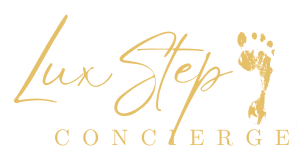Bunions (Hallux Valgus) and Hallux RigiduS
Bunions (hallux valgus) cause a bony bump and toe deviation, leading to discomfort and difficulty walking, while hallux rigidus results in degenerative arthritis, causing stiffness and immobility in the big toe. At LuxStep Concierge, non-surgical treatments include orthotics, padding, medications, physical therapy, and footwear modifications, and if these fail, advanced minimally invasive surgeries such as bunionectomy, cheilectomy, osteotomy, and joint fusion are offered for effective relief and quicker recovery.
Understanding Bunions
A bunion, also known as hallux valgus, is a bony bump that forms on the joint at the base of the big toe. This condition can cause the big toe to deviate toward the other toes, leading to discomfort and difficulty walking.
Hallux rigidus is a form of degenerative arthritis affecting the joint at the base of the big toe, leading to stiffness, pain, and restricted movement. Unlike hallux valgus, which involves a deviation of the toe, hallux rigidus involves the toe becoming rigid and immobile.
Symptoms
Symptoms of bunions and hallux rigidus include:
- Pain and Tenderness: Around the big toe joint, especially when wearing shoes.
- Swelling and Redness: Around the affected joint.
- Restricted Movement: Difficulty bending the toe in hallux rigidus.
- Visible Deformity: A noticeable bump on the side of the foot in the case of bunions.
Surgical Treatment Options
When non-surgical treatments fail, surgical intervention may be necessary. LuxStep Concierge offers advanced, minimally invasive surgical options tailored to each patient's needs, ensuring smaller incisions, less tissue damage, and quicker recovery. Our procedures include bunionectomy, which removes the bony bump and realigns the toe with minimal disruption, and cheilectomy for hallux rigidus, which removes bone spurs and part of the bone to improve joint mobility and reduce pain. We also perform osteotomy to correct deformities and restore proper alignment, and joint fusion (arthrodesis) to eliminate pain and restore function in severe cases of hallux rigidus. Using Arthrex’s cutting-edge tools and techniques, we ensure precise and effective surgeries.
Benefits of Minimally Invasive Surgery
Reduced Pain and Scarring
Smaller incisions lead to less post-operative pain and minimal scarring.
Quicker Recovery
Patients typically experience a faster return to normal activities.
Lower Risk of Complications
Minimally invasive techniques reduce the risk of infection and other complications.
If you are struggling with bunions or hallux rigidus, LuxStep Concierge is here to help.
Dr. Shital Sharma and our team of experts are dedicated to providing personalized, high-end medical care using the latest advancements in both non-surgical and surgical treatments.
For detailed information about our services and pricing, please connect with our patient care coordinator at 201-668-1333. Our team will be happy to assist you with any questions and provide personalized quotes based on your specific needs.
